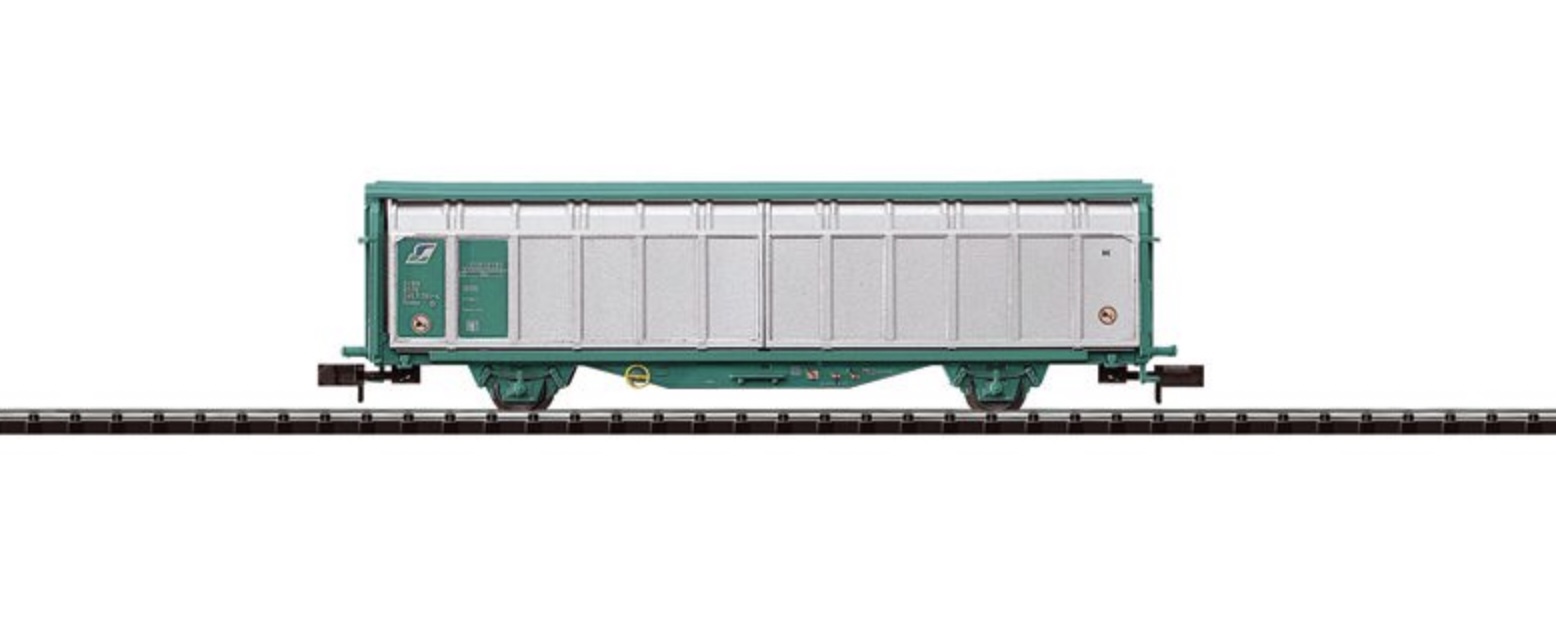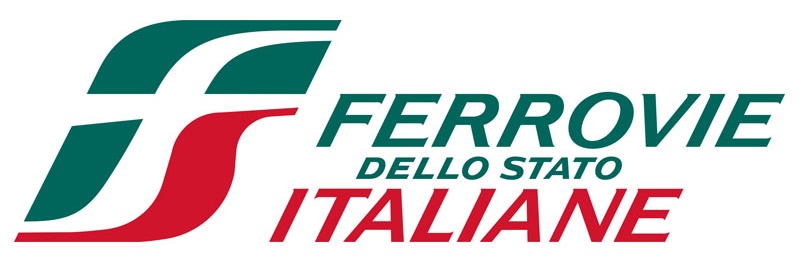Specific Item Information: Italian State Railroad (FS) type Hbbillns, built starting in 1989.
Road Name History: Ferrovie dello Stato Italiane S.p.A. (reporting marks: FS), previously Ferrovie dello Stato, is a state-owned holding company that manages infrastructure and services on the Italian rail network (English: Italian State Railways).
Ferrovie dello Stato was founded in 1905, and marked an important milestone in the process of the unification of Italy.
In 2000, to comply with European regulations, the company's two main divisions, service and infrastructure, were separated and two different independent companies were created: Trenitalia, responsible for transport service, and Rete Ferroviaria Italiana (RFI), responsible for the management of the rail infrastructure. Both companies were still subsidiaries of Ferrovie dello Stato Holding SpA.
In 2017, Ferrovie dello Stato Italiane acquired 100% of TrainOSE, the Greek national railways.
Read more on the company's historical timeline.
Ferrovie dello Stato was founded in 1905, and marked an important milestone in the process of the unification of Italy.
In 2000, to comply with European regulations, the company's two main divisions, service and infrastructure, were separated and two different independent companies were created: Trenitalia, responsible for transport service, and Rete Ferroviaria Italiana (RFI), responsible for the management of the rail infrastructure. Both companies were still subsidiaries of Ferrovie dello Stato Holding SpA.
In 2017, Ferrovie dello Stato Italiane acquired 100% of TrainOSE, the Greek national railways.
Read more on the company's historical timeline.
Brand/Importer Information: Trix is a German company that originally made Trix metal construction sets. one of its co-founders was Stephan Bing, the son of the pioneer toy-maker industrialist Ignaz Bing. In 1935 the company began producing the electrically powered model trains that it became famous for, under the Trix Express label. Prior to the outbreak of World War II the Trix company produced a small range of fairly unrealistic AC powered three rail models running at 14 volts.
N gauge models under the Minitrix brand were made from the late 1960s mostly of European prototypes (German and British primarily). North American prototypes were also manufactured and marketed under the Aurora "Postage Stamp" brand; later these items were sold under the American Tortoise, Model Power and Con-Cor brands. Trix sometimes utilized North American consultants to aid in the design of this portion of the product line. The "Hornby Minitrix' brand was used in the 1980s for a short lived range of British outline models using the earlier product tooling.
Trix's owner in the 1980s and 1990s was Mangold, which went bankrupt in the late 1990s and Märklin purchased the assets in January 1997. In part, this purchase was a reflection of Märklin's need for added production capacity; Trix had been manufacturing certain items for Märklin in previous years. The purchase was also in response to the earlier purchase of the Karl Arnold company by the Italian company Rivarossi; Märklin were very keen to take over Trix market share in 2-rail H0 and especially Minitrix, until then Märklin had not marketed N gauge models. In 2003, Märklin introduced its first N gauge models under the well established Minitrix brand. A number Märklin H0 scale three-rail AC locomotives have also been introduced in two-rail DC versions under the Trix logo and many models are shared between the two brands.
From Wikipedia
N gauge models under the Minitrix brand were made from the late 1960s mostly of European prototypes (German and British primarily). North American prototypes were also manufactured and marketed under the Aurora "Postage Stamp" brand; later these items were sold under the American Tortoise, Model Power and Con-Cor brands. Trix sometimes utilized North American consultants to aid in the design of this portion of the product line. The "Hornby Minitrix' brand was used in the 1980s for a short lived range of British outline models using the earlier product tooling.
Trix's owner in the 1980s and 1990s was Mangold, which went bankrupt in the late 1990s and Märklin purchased the assets in January 1997. In part, this purchase was a reflection of Märklin's need for added production capacity; Trix had been manufacturing certain items for Märklin in previous years. The purchase was also in response to the earlier purchase of the Karl Arnold company by the Italian company Rivarossi; Märklin were very keen to take over Trix market share in 2-rail H0 and especially Minitrix, until then Märklin had not marketed N gauge models. In 2003, Märklin introduced its first N gauge models under the well established Minitrix brand. A number Märklin H0 scale three-rail AC locomotives have also been introduced in two-rail DC versions under the Trix logo and many models are shared between the two brands.
From Wikipedia
Item created by: CNW400 on 2022-06-09 14:58:13. Last edited by Alain LM on 2024-04-20 06:21:39
If you see errors or missing data in this entry, please feel free to log in and edit it. Anyone with a Gmail account can log in instantly.
If you see errors or missing data in this entry, please feel free to log in and edit it. Anyone with a Gmail account can log in instantly.









